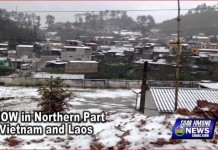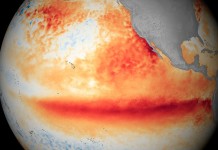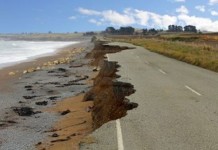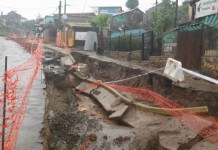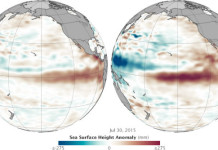Climate change: NOAA scientists describe the 2012 year as the warmest and second most extreme year on record for the contiguous U.S. in an annual publication (summary here).
According to the results, spring was the warmest ever, summer the second warmest ever, winter the fourth warmest ever and a warmer-than-average autumn.
Moreover, the annual average temperature of 55.3°F was about 3.2°F above the 20th century average, and 1.0°F above 1998, the previous warmest year.
2012 was the 15th driest year in US history: the overall precipitation was 2.57 inches below average (26.57 inches), with drought peaks in July across the US (from the Mountain West, to Great Plains, and Midwest) which resulted in the third highest wildfire destruction on record. The temperature of each state in the contiguous U.S. was in 2012 above the average annual temperature with 19 states having a record warm year and an other 26 having one of their 10 warmest. The 2012 winter was the 4th warmest ever recorded (December 2011-February 2012) and the snow cover the 3rd smallest. Spring was the warmest on record and resulted in an early growing season in many places which resulted to the widespread drought conditions for the 2012 summer, the second hottest summer on record. Finally autumn was warmer than average, but not of the same magnitude as the three previous seasons.
2012 is the second most extreme year for the US continental states. The 2012 U.S. Climate Extremes Index, calculated on the basis of extremes in temperature and precipitation, as well as landfalling tropical cyclones, is almost twice as high as the average value and second only after 1998. Moreover 11 nature disasters cost more than the $1 billion threshold in losses (remerber Sandy, Isaac, and tornado outbreaks experienced in the Great Plains, Texas and Southeast/Ohio Valley). Finally, with 19 named storms, ten hurricanes, and one major hurricane (Category 3 or stronger), the tropical cyclone activity across the North Atlantic was above-average in 2012, this is the third most active season for the basin.
Alaska and Hawaii
Alaska was cooler and slightly wetter with an annual temperature 2.3°F below average and an annual precipitation total 9.2 percent above average. Hawaii was plagued by moderate-to-exceptional drought.

